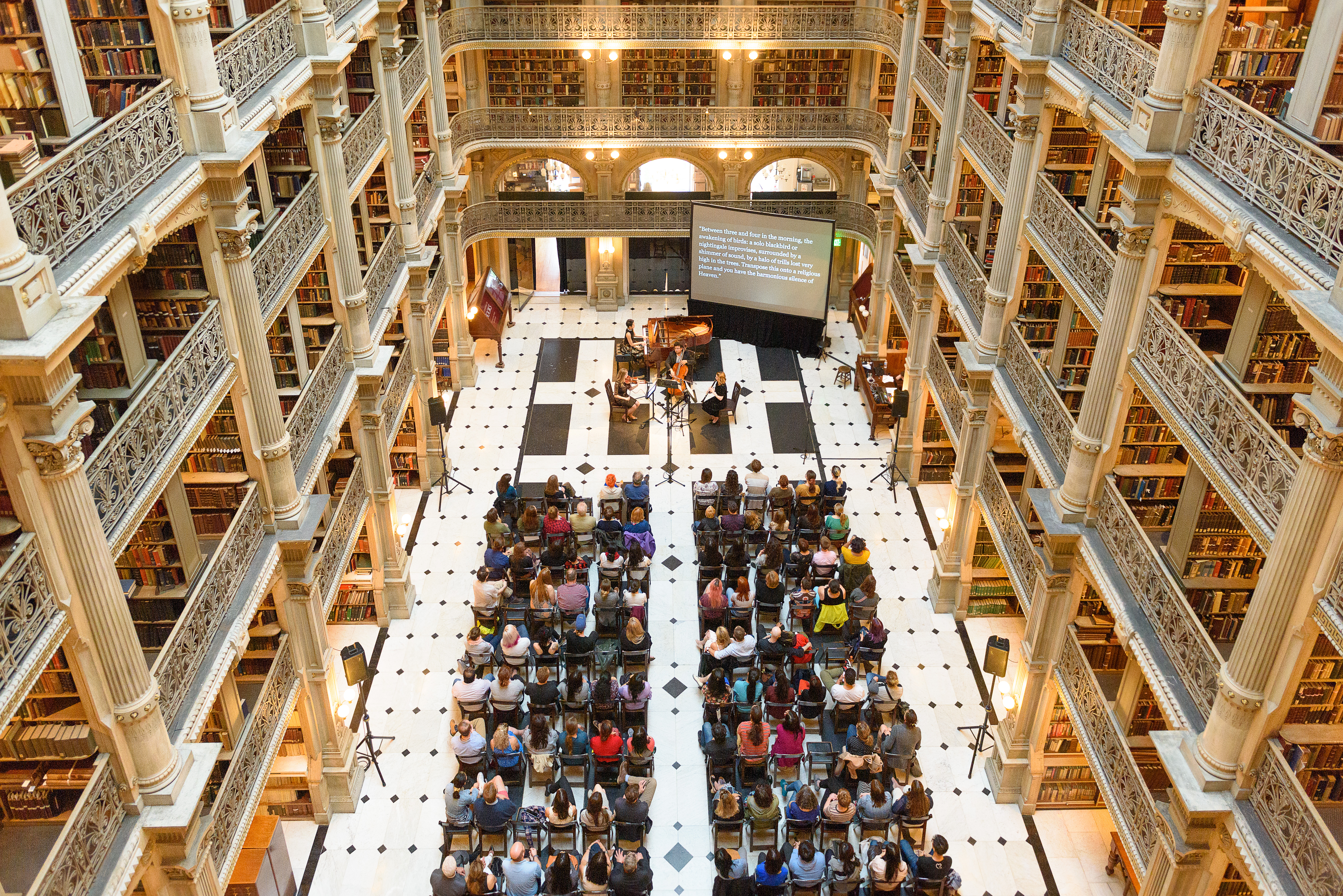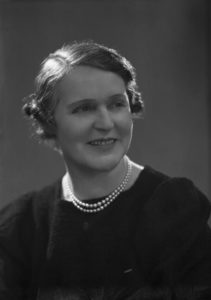In the Stacks produces classical music concerts in the George Peabody Library, with programming inspired by the library’s contents and history. Horn player Sam Bessen, Founder and Artistic Director of In the Stacks, writes about the history of the library’s Neoclassical style and the connection between Neoclassical architects and musicians.
The George Peabody Library, part of Johns Hopkins University’s Sheridan Libraries, was commissioned by Peabody to be “well-furnished in every department of knowledge and of the most approved literature.” Completed in 1878, its collections range from first-edition Charles Darwin to Copernicus. In the Stacks uses these collections as inspiration for its free programs. In an upcoming performance, the series will celebrate not only the library’s collections but the physical space that was designed to house them.

When a competition was held to determine the design of what would be one of the largest libraries in the United States, the Board of Trustees had one stipulation– the architecture could not be Gothic. Featuring stained glass windows and dramatic spires, the style was too heavily associated with religious structures. Instead, most of the architects (including the winning architect, Edmund Lind) took inspiration from Roman and Greek architecture. This sentiment towards renewing inspiration in Classical forms (now called Neoclassicism) affected not only architecture, but literature, music, and visual art.
This Neoclassical inspiration can be found all over the Library, from the design of the columns to the choice in materials themselves. In building the library, Lind had to create a structure that could contain 300,000 flammable objects lit by gas lamps. Since stone would be impractically expensive to use (except for the marble floor), he turned to steel. In another tribute to the Greeks and Romans, he incorporated flowerlike embellishments into the railings and painted them grey to replicate stone.

At the same time, Neoclassical composers like Francis Poulenc and Germaine Tailleferre were looking back to the forms used by their great predecessors. Just how architecture is made up of a series of forms (windows, floors, ceilings), so too is music (notes, phrases, keys, etc.) The same could be said of visual artists (colors, textures, materials) and even authors (words, sentences, and punctuation). These basic forms have been the building blocks of creators for centuries, constantly evolving to include cutting edge techniques.
So why did the Neoclassicists revive an ancient art form? How do we all interact with our past? Do we celebrate it, or do we work to subvert it? This performance will explore the deeply human sentiments underlying this Neoclassical movement and explore the ways in which authors, composers, visual artists, and architects broke down ancient forms to build new masterpieces.
****
Earlier this year, Sam was a guest on Humanities Connection. Listen to his segment here.
The upcoming In the Stacks performance will take place at 6:30 pm on August 21, 2019. Doors will open at 6:00 p.m. with seating available for 200 (additional limited standing room available). No tickets required and entry is free. For more information, visit www.inthestacks.org.
Did you know that the George Peabody Library is one of the stops on our Literary Mount Vernon Walking Tour? Learn more about the tour here.
Disclaimer: The views and opinions expressed on our blog do not necessarily reflect the views or position of Maryland Humanities or our funders.

